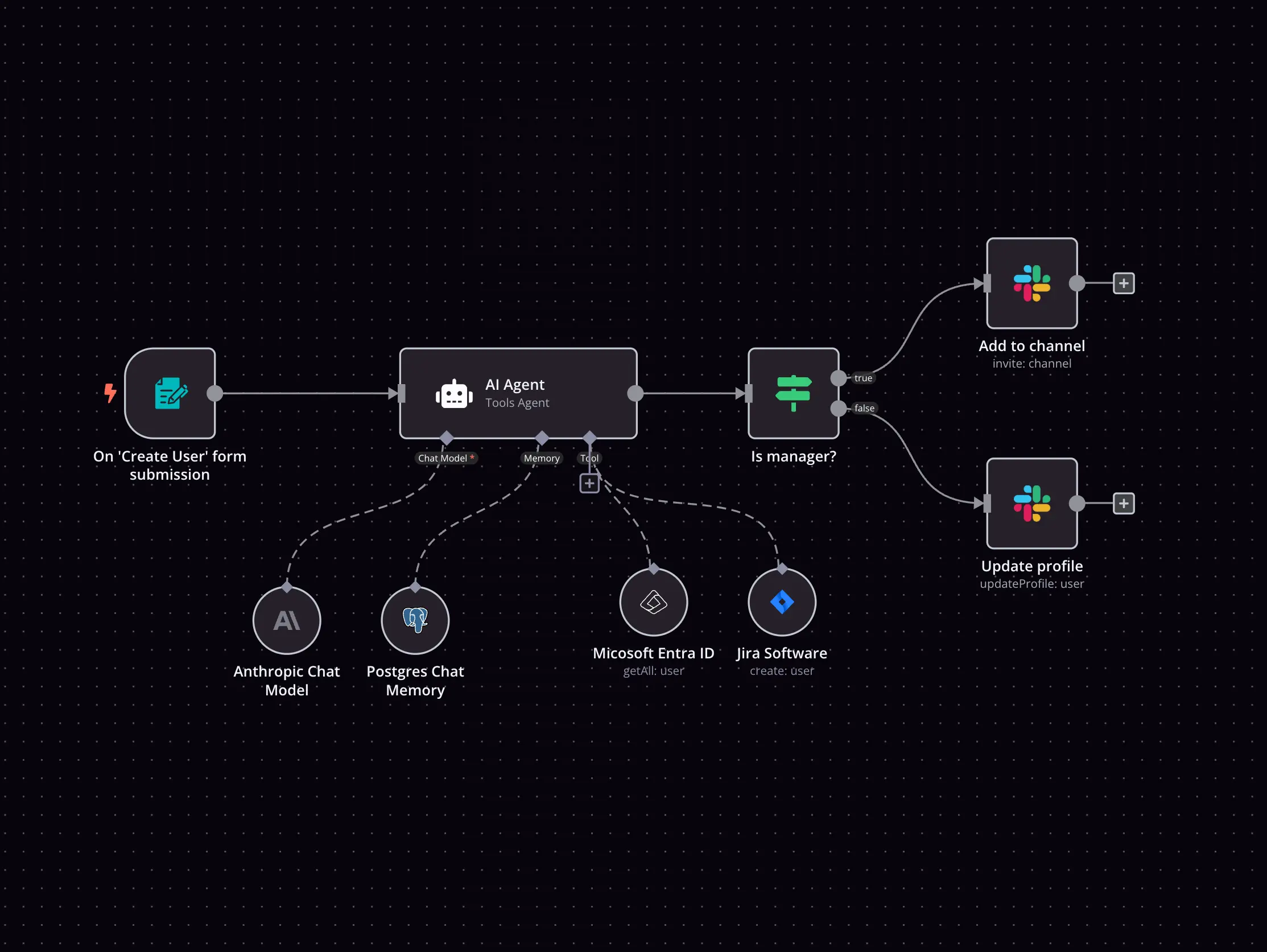Cody and Lusha integration
Save yourself the work of writing custom integrations for Cody and Lusha and use n8n instead. Build adaptable and scalable Productivity, workflows that work with your technology stack. All within a building experience you will love.


How to connect Cody and Lusha
Create a new workflow and add the first step
In n8n, click the "Add workflow" button in the Workflows tab to create a new workflow. Add the starting point – a trigger on when your workflow should run: an app event, a schedule, a webhook call, another workflow, an AI chat, or a manual trigger. Sometimes, the HTTP Request node might already serve as your starting point.
Build your own Cody and Lusha integration
Create custom Cody and Lusha workflows by choosing triggers and actions. Nodes come with global operations and settings, as well as app-specific parameters that can be configured. You can also use the HTTP Request node to query data from any app or service with a REST API.
Supported API Endpoints for Cody
List bots
Retrieve a list of all bots.
List conversations
Retrieve a list of all conversations.
Create conversation
Create a new conversation.
Get conversation
Retrieve details of a specific conversation.
Update conversation
Update the details of a specific conversation.
Delete conversation
Delete a specific conversation.
List conversations
Get all conversations.
Get conversation
Retrieve a specific conversation.
List documents
Retrieve a list of all documents.
Create document
Create a new document.
Delete document
Delete a specific document.
Create document from file
Create a document using a file upload
Create document from webpage
Create a document using webpage content
Get document
Retrieve details of a specific document
List documents
Get all documents.
Get document
Retrieve a specific document.
List folders
Retrieve a list of all folders.
Create folder
Create a new folder.
Get folder
Retrieve details of a specific folder
List folders
Get all folders.
List messages
Retrieve a list of all messages.
Send message
Send a new message.
List messages
Get all messages.
Get upload URL
Retrieve a signed URL for uploading files.
To set up Cody integration, add the HTTP Request node to your workflow canvas and authenticate it using a generic authentication method. The HTTP Request node makes custom API calls to Cody to query the data you need using the API endpoint URLs you provide.
See the example hereThese API endpoints were generated using n8n
n8n AI workflow transforms web scraping into an intelligent, AI-powered knowledge extraction system that uses vector embeddings to semantically analyze, chunk, store, and retrieve the most relevant API documentation from web pages. Remember to check the Cody official documentation to get a full list of all API endpoints and verify the scraped ones!
Supported API Endpoints for Lusha
Get person
Retrieve a person's data using their name and company information.
Create person
Create a new person entry in the system using the provided information.
Get person details
Retrieve details of a person by their first name, last name, and company.
Get person details with phone numbers
Retrieve details of a person, filtered by existence of phone numbers.
Create person search request
Create a search request for a person using a list of organizations.
Bulk create person
Create multiple person entries in a single request.
Create company
This endpoint allows you to create a bulk company request.
Create company names
Creates a company name search based on the provided text.
List company sizes
Retrieves the list of company sizes.
List company revenues
Retrieves the list of company revenues.
Create company locations
Creates a location search based on the provided text.
List company SICS
Retrieves the list of company SICS codes.
List company NAICS
Retrieves the list of company NAICS codes.
List company industries labels
Retrieves the list of industry labels for companies.
List companies
Get a list of companies using target audience filters.
Enrich companies
Enrich a company's information using its ID and request ID.
Get company
Retrieve information about a company using its domain name.
Search companies
The request for search companies is mainly based on the filters which were mentioned earlier.
Create contact job titles
Creates a job title search for contacts based on the provided text.
List contact departments
Retrieves the list of contact departments.
List contact seniority
Retrieves the list of contact seniority levels.
List existing data points for contacts
Retrieves the existing data point labels for contacts.
List all countries for contacts
Retrieves the list of all countries for contacts.
Create contact locations
Creates a location search for contacts based on the provided text.
Search contacts
Search for contacts based on provided filters.
List contacts
Get a list of contacts using target audience filters.
Enrich contact
The Enrich API provides information about requested contacts.
To set up Lusha integration, add the HTTP Request node to your workflow canvas and authenticate it using a generic authentication method. The HTTP Request node makes custom API calls to Lusha to query the data you need using the API endpoint URLs you provide.
See the example hereThese API endpoints were generated using n8n
n8n AI workflow transforms web scraping into an intelligent, AI-powered knowledge extraction system that uses vector embeddings to semantically analyze, chunk, store, and retrieve the most relevant API documentation from web pages. Remember to check the Lusha official documentation to get a full list of all API endpoints and verify the scraped ones!
Cody and Lusha integration details
FAQ
Can Cody connect with Lusha?
Can I use Cody’s API with n8n?
Can I use Lusha’s API with n8n?
Is n8n secure for integrating Cody and Lusha?
How to get started with Cody and Lusha integration in n8n.io?
Looking to integrate Cody and Lusha in your company?
The world's most popular workflow automation platform for technical teams including
Why use n8n to integrate Cody with Lusha
Build complex workflows, really fast


